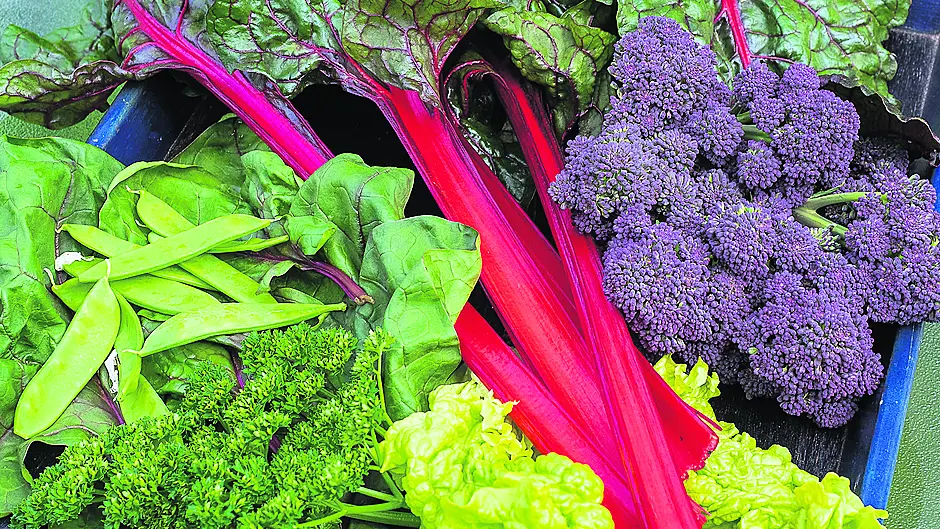By Joyce Russell
EASTER is with us and let’s hope for some fine weather. It’s a rewarding time of year to be out in the garden and there are lots of plants that need care and attention. Containers look lovely with their burst of spring flowers, but remember that they dry out quickly and don’t get as much rain if they are placed by a sheltered wall. Keep compost damp if you want the display to continue for as long as possible and use a liquid feed to give a nutrient boost.
There’s lots of small plants being raised at this time of year. Look after them like babies and they will grow into healthy and productive adults. Protect from temperature swings and don’t let compost dry out. Deal with problems as soon as you spot them and never let a plant become rootbound.
Hardening off
Lots of sowings do well if started in pots in a greenhouse. These may be planted outdoors when they are big enough and if weather allows. If you intend to move plants from a warm and sheltered growing position to a colder more exposed one, then it is wise to do this in stages. Hardening off takes a few days, but it reduces shock to a plant and growth is less likely to be interrupted. Tender plants like courgettes and outdoor tomatoes may need a week or two of hardening off. Hardier plants like beetroot or peas may only need five or six days. A lot depends on how settled the weather is when you want to move young plants out to the garden. If there are no frosts, no gales and no heavy rain, then you will get away with a shortened hardening off process.
You can start by putting plants in a sheltered place outdoors when the weather permits. A bit of rain is welcome, but don’t let compost become waterlogged or small plants might fail. Bring plants back under cover at night for the first few days. If nights are mild enough then plants can be left out for the next few nights. Keep exposing them to outdoor conditions until they have experienced a normal range. Use a cloche, or crop-cover, to give extra protection when plants are finally planted out. This can be removed when young plants are established and growing well.
A cold frame is a perfect tool for helping to harden off plants. You can open and close it when needed without having to move plants.
Keep harvesting
Some of my favourite crops are ready at this time of year. Purple sprouting broccoli is at a peak of production and the first mange-tout peas are ready to pick. It’s a beautiful cross over between the old and the new.
Fresh spring lettuce shows up the bitterness of big overwintered salad leaves and if you can’t keep up with the excesses of Swiss chard, you can freeze it in blanched, chopped and squeezed, balls to use at a later date.
I always get a glut of parsley at this time. It’s delicious made into a pesto with walnuts – a nice change from the basil variety.
A word on broad beans
Autumn sown plants are in flower now and the flowers need to set pods if possible. Flowers are self-fertile but the earliest ones can be slow to set and they are always helped by any bees that are out and about.
Keep plants uncovered or open nearby doors if growing in a polytunnel or greenhouse. A breeze will help pollen shake down where it is needed or you can gently brush a hand along a row of plants – take care not to damage flowers.










